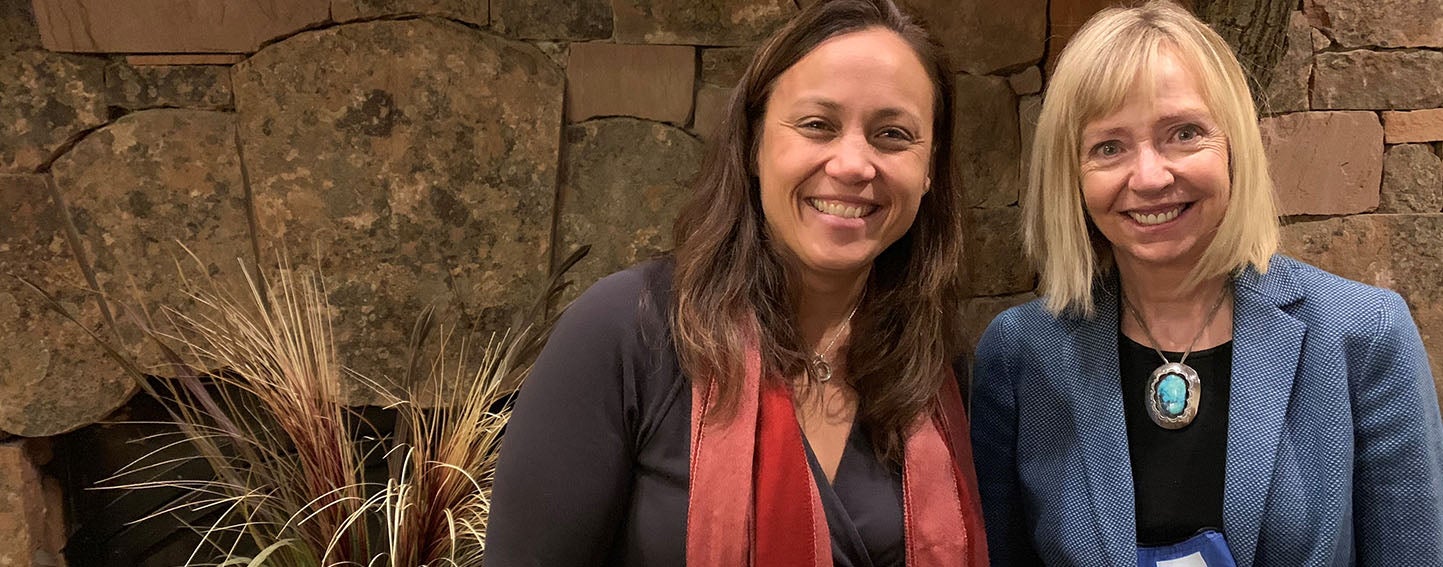
This year’s state budget included $60 million for the creation of the Healthcare Cost Transparency Database, an all-payer claims database (APCD) for California. Twenty-four other states are using APCDs to gain a better understanding of what is driving health care cost growth; how use and referral patterns vary among different networks, facilities, and providers; and which factors are contributing to population health issues like the opioid epidemic.
I recently sat down with two experts on APCDs and coleaders of the APCD Council — Denise Love of the National Association of Health Data Organizations and Jo Porter of the University of New Hampshire’s Institute for Health Policy and Practice — to discuss the use cases and potential for these data sets. The transcript has been edited for content and clarity.
Q: What is an all-payer claims database?
Love: All-payer claims databases aggregate claims and administrative data across public and private payers in a state. When a patient goes to the doctor, gets a lab test, or fills a prescription, administrative information on what service was delivered and who provided it is generated and reported to a health insurer as a “claim.” These claims data are universally used by public programs like Medi-Cal and Medicare as well as private insurance companies like Anthem and Blue Shield of California. In non-fee-for-service environments like Kaiser Permanente, claims are generated in the form of encounters, which contain information on what services are being delivered within its capitated system. Statewide, all-payer claims databases aggregate that information across all public and private programs.
Q: Who would want that information? What could it be used for?
Love: Every health insurer uses its own proprietary claims database to write contracts, negotiate premiums, and assess the needs of their population or the performance of their network. The all-payer claims database (APCD) provides a unique view across the entire market. Aggregating data from multiple payers can help consumers and policymakers understand how the market is functioning and what kinds of interventions may be needed to make it work better for patients.
Q: How have policymakers in other states used these databases to understand their health care market or to make it work better for patients?
Porter: One of the very early use cases in my home state of New Hampshire related to expanding access to care through telemedicine. Much of New Hampshire is very rural and lacks sufficient numbers of providers. The state’s APCD quantified this phenomenon, providing data on the distance that people travel for care. New Hampshire’s insurance regulators use that information to make rules on network adequacy and to enforce them. When a health plan says, “Yes, we have providers in these areas,” the regulators are able to use claims data to verify that patients are able to receive the care they need in the places they need it.
Q: The policy community in California is very interested in health care costs. Is there value in creating an APCD to look at cost drivers?
Porter: Absolutely. States have used APCDs to understand pricing and unit costs across the market, which is essential to good policymaking. An excellent example comes from Massachusetts, where state policymakers conduct an annual health cost hearing that uses their APCD to understand underlying cost drivers. They have some very large, expensive academic medical centers, and they have very rural areas with different providers. Every year, the APCD enables them to understand where money is flowing and what type of care is being delivered across the state, and then they make very targeted policy recommendations.
Q: What benefits can consumers get from a state APCD?
Love: Maine and Maryland have developed very consumer-friendly cost-transparency websites with price data from APCDs. When a patient in Maine needs a colonoscopy, for instance, he or she can go to the state’s website and see how much different providers charge for it. If we are going to expect consumers to shop around for certain procedures, we need to ensure they have cost information that APCDs help provide.
Q: Would APCD data be valuable to providers?
Porter: Yes. A project in New Hampshire has created a series of cost and utilization reports for providers that offer a broader look at the population they care for. Often, providers only know what happens to their patients in their office or within their own health system. But as we gravitate toward new models of care and payment, providers need to understand the full scope of care being delivered to their patients, both within their walls and beyond them.
Q: What are the most important things these other states have done to ensure that their APCDs succeed?
Porter: Stakeholder engagement is the most important thing. Many folks will be affected by the rules of data collection, and they should have a voice in determining what that is going to look like for them. Many other entities might use the data. These conversations are most effective when the stakeholders can hear from each other, and these APCD users should be part of them. A multistakeholder process is also extremely helpful during implementation and following launch of the APCD. Whether that’s an advisory council, a defined stakeholder group, or a regular meeting of stakeholders, it provides an opportunity for the state agency to hear stakeholders’ concerns and understand what mechanisms exist to continually collect and react to changes needed to the data.
Q: One of the questions that California stakeholders will be exploring soon is what type of information needs to be collected to make an APCD useful. How should California identify it?
Love: Fortunately, a lot of that work has been done by other states, which are collecting information on charges, allowed amounts, and paid amounts. Of course, each state needs to have a careful, constructive conversation about what to collect and who will ultimately have access to it. In some states, information such as paid amounts are considered “sensitive,” so the data are averaged across payers so as not to reveal individual discounts between payers and providers.
Q: California takes consumer privacy very seriously. How have other states addressed that within the context of APCDs?
Porter: APCDs need to follow federal privacy laws like the Health Insurance Portability and Accountability Act of 1996 (HIPAA) and state privacy laws. California privacy protections are more stringent than HIPAA’s. Within those guardrails, policymakers must decide what to collect and to make available. Wherever California lands, it likely will be able to leverage a set of rules that has been created by another state. If California wants to go all the way and make sure policymakers, consumers, and academic researchers have access to everything an APCD has to offer, other states have models for that. If it’s something short of that, there are states it can model after.
Q: As California embarks on this effort, what advice would you give to stakeholders?
Porter: Even though California is far bigger than any state that has developed an APCD, it’s unlikely that the stakeholders in this process will encounter any obstacle that hasn’t arisen someplace else. There is a lot of history and experience to leverage. It can be done.
Read a set of recommendations for California compiled by the UCSF/UC Hastings Consortium on Law, Science and Health Policy based on an analysis of APCDs in four other states.
Authors & Contributors




